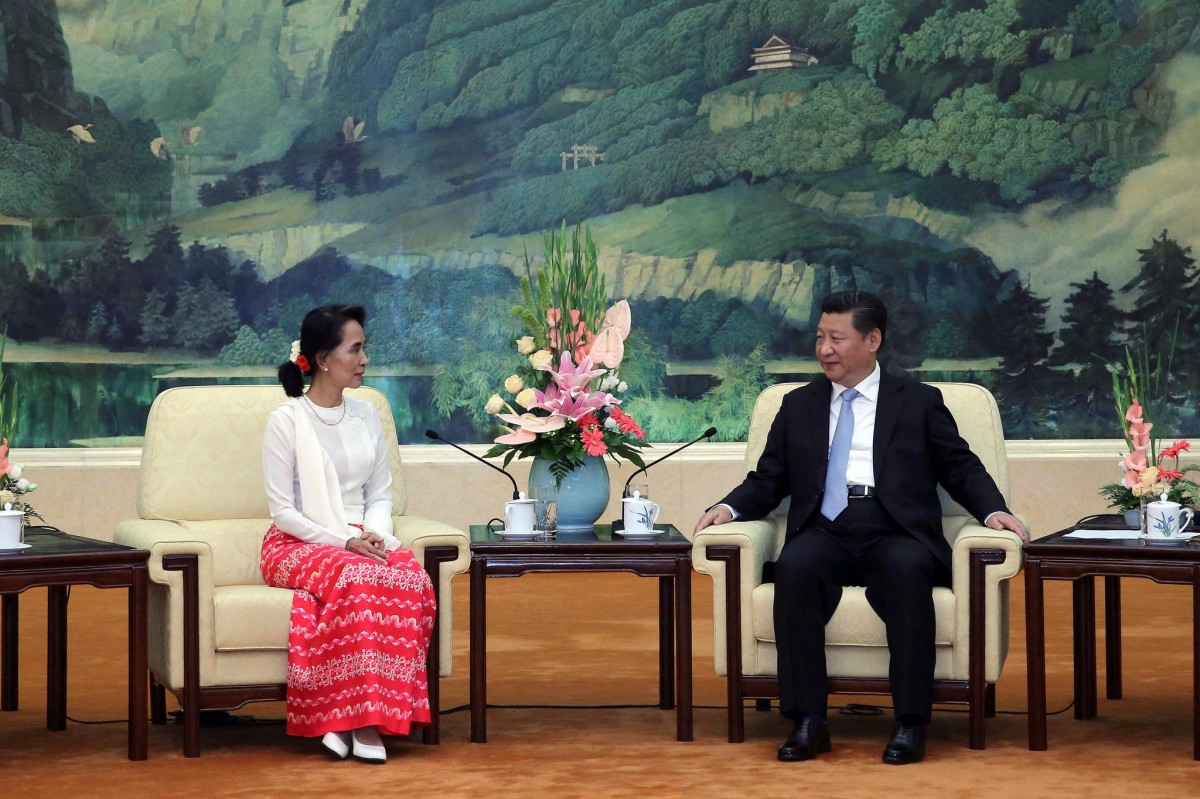Memo #380
By: Jonathan T. Chow – jchow [at] umac.mo and Leif-Eric Easley – easley [at] post.harvard.edu
How Over-reliance on China Spurred Myanmar’s Reforms

 In late 2010, Myanmar’s repressive military junta transformed itself into a nominally civilian government, over two decades after it had seized power. Upon becoming president in early 2011, former general Thein Sein unexpectedly launched wide-ranging reforms, releasing political prisoners (including National League of Democracy leader Aung San Suu Kyi), liberalizing state control of the media, and allowing members of opposition parties to run for parliament. Myanmar’s leaders had long promised to return power to the people, but why did they finally implement a strategic decision to reform and open the country in 2010?
In late 2010, Myanmar’s repressive military junta transformed itself into a nominally civilian government, over two decades after it had seized power. Upon becoming president in early 2011, former general Thein Sein unexpectedly launched wide-ranging reforms, releasing political prisoners (including National League of Democracy leader Aung San Suu Kyi), liberalizing state control of the media, and allowing members of opposition parties to run for parliament. Myanmar’s leaders had long promised to return power to the people, but why did they finally implement a strategic decision to reform and open the country in 2010?
Field interviews with key informants in Myanmar indicate that the most important reason for the strategic decision was leaders’ fears of over-reliance on China. After the junta took power in 1988, China became a major source of diplomatic support for Myanmar (for example, blocking UN resolutions condemning the junta for human rights violations) and its main partner for trade and investment. China gained access to Myanmar’s rich natural resources—including minerals, natural gas, lumber and hydropower—as well as a potential strategic corridor to the Indian Ocean.
Over time, Myanmar’s leaders grew concerned about China’s deepening influence on the country’s economy and security. Chinese-led infrastructure and resource extraction projects like the Myitsone Dam often displaced local residents, caused significant environmental damage, and spurred public protests. Chinese sway over corrupt officials close to the center of the Myanmar state, as well as with various ethnic minority militias fighting on the state’s periphery, reached a point where sovereignty was arguably threatened.
This prompted Myanmar’s leaders to pursue an opportunity to diversify diplomatic relations and reduce economic sanctions after the United States announced in February 2009 that it would review its Myanmar policy. By releasing Aung San Suu Kyi and adopting major reforms in 2010-11, Naypyidaw effectively attracted diplomatic support and economic investment. While other factors played a role—the aging junta preferred to exit while in a position of strength relative to domestic opposition, and Myanmar’s interactions with fellow members of the Association of Southeast Asian Nations (ASEAN) encouraged reform—over-reliance on China best explains Myanmar’s strategic decision to exit pariahdom.
About the Authors:
Jonathan T. Chow is Assistant Professor in the Department of Government and Public Administration at the University of Macau.
Leif-Eric Easley is Assistant Professor in the Division of International Studies at Ewha Womans University (Seoul, Korea) and a Research Fellow at the Asan Institute for Policy Studies.

In June 2015, Daw Aung San Suu Kyi spoke with President Xi Jinping of China in Beijing (Credit: Liu Weibing/Xinhua, via Associated Press).
Links
- Jonathan T. Chow and Leif-Eric Easley, “Persuading Pariahs: Myanmar’s Strategic Decision to Pursue Reform and Opening,” Pacific Affairs 89, no. 3 (2016): 521-542.
- Jonathan T. Chow and Leif-Eric Easley, “Upgrading Myanmar-China Relations to International Standards,” Asan Issue Brief 2015-21 (2015): 1-25.
- Jonathan T. Chow and Leif-Eric Easley, “Rebalancing not Pivoting: Myanmar’s Reforms and Relations with Washington and Beijing,” PacNet #68, September 8, 2016 (also published in Burmese by the Irrawaddy).
- Marco Bünte and Jörn Dosch, “Myanmar: Political Reforms and the Recalibration of External Relations,” Journal of Current Southeast Asian Affairs 34, no. 2 (2015), 3-19.
- Maung Aung Myoe, “Myanmar’s China Policy Since 2011: Determinants and Directions,” Journal of Current Southeast Asian Affairs 32, no. 2 (2015): 21-54.
- Antonio Fiori and Andrea Passeri, “Hedging in Search of a New Age of Non-Alignment: Myanmar between China and the USA,” Pacific Review 28, no. 5 (2015): 679-702.
- Chiung-Chiu Huang, “Balance of Relationship: The Essence of Myanmar’s China Policy,” Pacific Review 28, no. 2 (2015), 189-210.
- David I. Steinberg and Hongwei Fan, Modern China-Myanmar Relations: Dilemmas of Mutual Dependence (Copenhagen: NIAS Press, 2012).